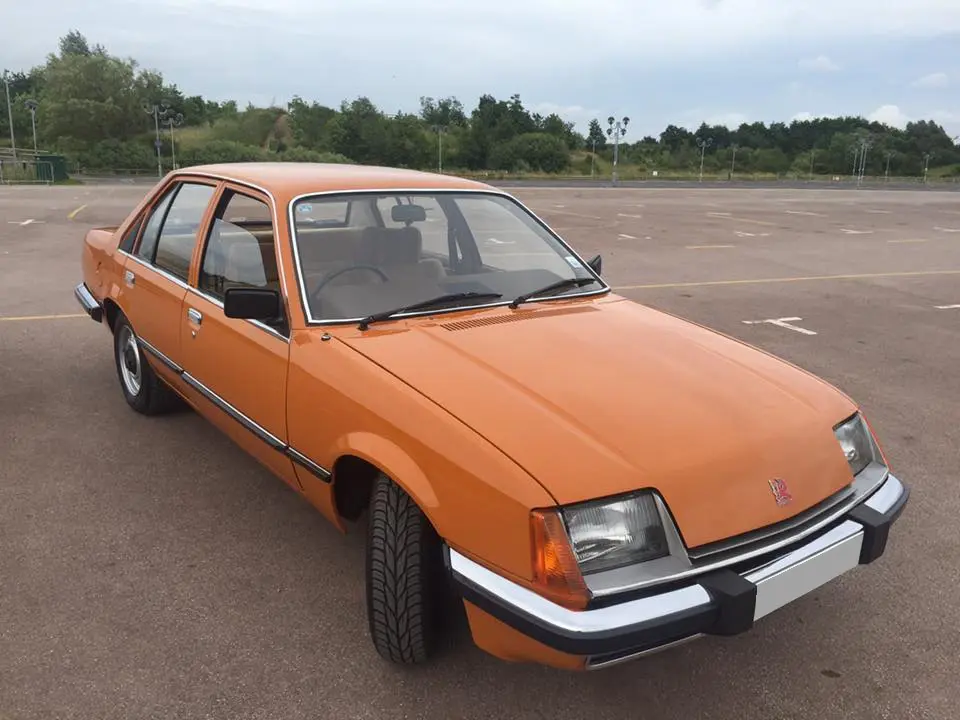MEET THE OWNER – JOHN KINGSFORD AND HIS VAUXHALL CARLTON MK.I
10 November 2023
There is an elite group of cars that fall into the category of “whatever happened to” - cars such as John Kingsford’s magnificently Orange Tan Vauxhall Carlton. 45 years ago, this was the perfect transport for the someone who was really “going places” – and who chose a paint finish that would undoubtedly stand out in the office car park.
The Carlton was an Anglicised version of the Opel Rekord E and the replacement for the FE-series VX 1800/2300. Vauxhall’s famed designer, Wayne Cherry, gave the German design a new front and fascia. For the Carlton to not clash with the Rekord, the sole engine choice was the 2-litre unit from the more upmarket Cavaliers, and there was one trim level in saloon or estate forms. As a Vauxhall director told the press: “Opel had already tooled up for the cars, so we could broaden the range with far less investment”.

When the Carlton made its bow in September 1978, Vauxhall boasted it was “a trendsetter that brings a new direction, a new concept to 2-litre luxury motoring”. Dealers were further advised, “the best way to convince prospects of the superior qualities of the Carlton is to demonstrate them on a test drive”. In that way, a potential buyer would have “all-round evidence of luxury specifications”, including the decadence of a height-adjustable driver’s seat and a push-button Phillips radio.
Such elaborate launch preparations were necessary as Vauxhall dealers had to aim at “conquest sales” from other marques. The VX 1800/2300 may have been a rather agreeable car, especially in GLS form, but it was a slow seller. As a result, the Carlton had to appeal to non-Vauxhall customers with £4,600.44 to spend on the saloon. Such motorists would have otherwise looked at the Ford Granada 2.0L or the Leyland Princess 2200HLS.
Fortunately, Motor Sport regarded the Carlton as “one of those very comfortable, nicely-appointed family cars which is undemanding on the driver and a pleasure to use”. Car thought it had “road behaviour to rival those with much more advanced and modern engineering under them”. Autocar also pointed out, “it is important to emphasize that this is not just an import operation. Vauxhall are building the car themselves at the Luton factory”. In the late 1970s, the Carlton’s British origins were vital for many fleet buyers.
Vauxhall replaced the original Carlton with the Mk.2 in 1982, and now just four of the first-generation versions remain on the road - https://www.howmanyleft.co.uk/vehicle/vauxhall_carlton. John acquired his Carlton Automatic in 2016, and as he also owns an Austin Ambassador, clearly appreciates the charm of bygone executive motoring. “It’s such a lovely car. It’s been restored but appears totally original, so it is a real time warp!”
Naturally, John revels in his Vauxhall’s Orange Tan paintwork, the beige “ribbed velour cloth” upholstery, and the fascia’s strip of fake wood that resembles genuine plastic. As for its road manners: “It is amazingly good to drive. The Carlton always seems quieter than a Princess, lacking the rattles and squeaks of that car, with unexpectedly soft and comfy seats. The 2.0 auto is also far better than expected, although it has never much liked starting from cold!”
It virtually goes without saying that John’s Carlton attracts a vast amount of attention – the standard comment is “My Dad had one of those!”. And who could resist the appeal of “A car designed by perceptive perfectionists to give unrivalled comfort, refinement and road manners at a sensible price”? Not to mention that ultra-orange paint finish.
With thanks to: John Kingsford
